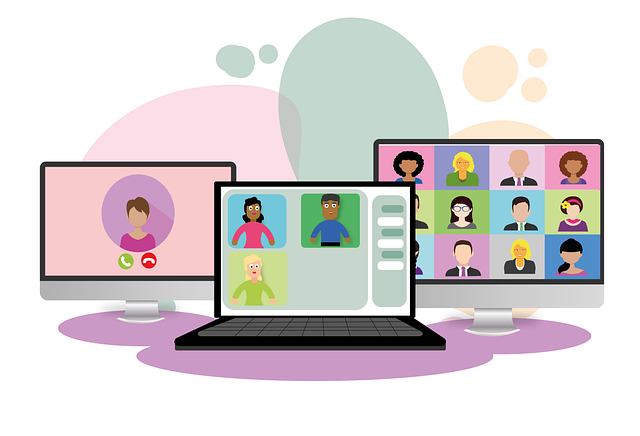The digital landscape is vast, offering a myriad of opportunities for connecting, teaching, and influencing. Among these, webinars have emerged as a powerful tool to reach audiences far and wide.
But as you weigh the pros and cons, you can't help but ask yourself, "Are webinars worth it?"
Well, that's a fantastic question, because, let's face it, webinars can seem intimidating. They're this grand combination of live performance, teaching seminar, and digital tech that can make even the most tech-savvy among us pause.
So, we're going to break it down, piece by piece. We'll cover what webinars are, why they might appeal to you, potential downsides, and how you can make them worth your while.
By the end of this conversation, you'll have a clearer understanding, and you'll be able to make an informed decision. And who knows? You might just be the next big webinar sensation.
Let's dive in!
Disclosure: Although I receive affiliate compensation at no additional cost to you to support this site that compensation in no way influences my recommendations, which are strictly informed by my 10+ years of online business experience consulting for clients large and small. My aim is to always recommend tools that offer the best return for your investment (for more details, read my Affiliate Disclosure).
Defining Webinars
First things first, let's delve into what a webinar actually is.
Derived from the words 'web' and 'seminar', a webinar is an online event that is hosted by an individual, a company, or an organization, and broadcasted to a select group of individuals through their computers via the internet.
Webinars typically have audio and visual components. The audio is for the presenter to speak and the visual component can range from a simple presentation slide show to a live video feed.
But unlike most online videos, webinars are interactive. That's the beauty of them. They're not just about passively watching a screen.
Participants can interact, give feedback, ask questions, answer polls, and engage in discussions. It's just like being in a real seminar room or lecture hall, except you're sitting comfortably at home or in your office, and so is everyone else.
Webinars can be used for various purposes like educating an audience about a specific topic, showcasing a new product, providing training, hosting a panel discussion, or even holding a large-scale conference.
There's a lot of versatility in webinars, which makes them a popular choice in the digital world.
The Appeal of Webinars

Now, onto the big question. Why should you, an aspiring webinar creator, even consider webinars? Here's why.
Reach and Engagement
One of the biggest appeals of webinars is the potential to reach not just a large audience, but a global one.
It doesn't matter where you or your audience are located, whether it's New York, London, Sydney, or anywhere in between. As long as you have an internet connection, you can connect.
This is especially important in today's globalized world, where your next big client or collaborator could be on the other side of the globe.
Plus, webinars offer real-time engagement. You can answer questions, respond to comments, and even adjust your presentation based on live feedback. It's a dynamic way to interact with your audience and make them feel seen and heard.
Cost-Effective
In the past, hosting a seminar or a workshop meant shelling out for a venue, catering, travel expenses, and accommodation for speakers.
With webinars, these costs are eliminated. All you need is a computer, a microphone, a webcam, and a webinar platform.
This makes webinars a cost-effective solution for sharing knowledge, especially for small businesses and startups that may not have a big budget.
Flexibility
With webinars, you're not tied to a specific location or time. You can host a webinar from your living room or from a co-working space.
You can host it in the morning, in the afternoon, or even in the evening. You have the freedom to choose what works best for you and your audience.
Plus, most webinar platforms allow you to record the webinar, so even those who can't attend live can still benefit from the information.
Lead Generation
Webinars can be an effective way to generate leads for your business. By offering valuable content, you attract interested individuals who could potentially become clients or customers.
During the registration process for the webinar, you can gather valuable information about these individuals, like their names, email addresses, and even their specific interests or needs.
This can help you tailor your future marketing efforts to better meet their needs.
In a nutshell, webinars are a flexible, cost-effective, engaging, and potentially profitable way to share information and connect with a diverse, global audience.
They can be a powerful tool in your digital toolkit, whether you're a solo entrepreneur, part of a small start-up, or an established business looking to expand your reach.
The Potential Downsides of Webinars
Having said that, no platform is without its challenges, and webinars are no exception. While they come with a host of advantages, there can be a few bumps along the way.
Technical Glitches
Even with the best preparation, technical hiccups can happen. Your internet connection could drop, your audio might not work, or the webinar platform could freeze.
There's nothing more frustrating than being in the middle of a riveting presentation, only for your technology to fail you.
It's an issue that can cause delays, disrupt the flow of your presentation, and potentially disengage your audience. But don't worry, most of these issues can be mitigated with a little tech savvy and preparation.
Time Zones
If you're aiming for a global audience, time zones can turn into a real puzzle. You could be in Los Angeles, with attendees in London, Dubai, and Sydney.
Finding a time that suits all your participants can be like finding a needle in a haystack. This isn't a deal-breaker, but it does require some clever scheduling and potentially offering recorded versions for those who can't attend live.
Engagement Challenges
Let's face it, engaging an audience online can be a bit harder than in-person.
There's no direct eye contact, no shared physical space, and let's not forget the myriad of distractions available to your audience at their end (social media notifications?). You'll need to get creative to keep your audience engaged and attentive.
Preparation Time
Webinars require a good amount of preparation. You need to create content, design your presentation, test your tech, promote your webinar, and more.
This can take a significant amount of time, especially if you're new to webinars. However, with experience, you'll likely find ways to streamline the process.
The Fear of Public Speaking
Even though you're behind a screen, if the thought of public speaking gives you the jitters, hosting a webinar can seem daunting.
The key here is practice and remembering that it's okay to make mistakes. Your audience is there for your valuable content, not a flawless performance.
It's important to keep these potential downsides in mind, not to discourage you, but to prepare you. Remember, every challenge presents an opportunity for problem-solving and growth.
So, even if you do encounter these issues, consider them stepping stones, not roadblocks, on your path to webinar success.
Making Your Webinar Worth It: A Step-By-Step Guide

So, how can you ensure your webinar is worth it?
Step 1 - Plan: Set a clear goal for your webinar. Is it for lead generation, product demonstration, or educational purposes?
Step 2 - Prep: Prepare your content. Make sure it's engaging, informative, and adds value to your audience. And practice. A lot.
Step 3 - Promote: Use social media, email marketing, and other channels to promote your webinar.
Step 4 - Present: On the big day, deliver your best. Be interactive, answer questions, and most importantly, be yourself.
Step 5 - Post-Webinar Follow Up: Send out a thank-you email, share the webinar recording, and ask for feedback.
In Conclusion
Webinars can offer a world of possibilities. They can help you reach people across the globe, engage with them in real-time, and offer them valuable insights, all from the comfort of your home or office.
But they also require work. They require you to understand your audience, create engaging content, and navigate the occasional technical hiccup.
Now, don't let that scare you off. Remember, every challenge is an opportunity in disguise. Each webinar you host is an opportunity to learn, to grow, and to become a better presenter.
So, embrace the challenges, celebrate the victories, and keep pushing forward!







